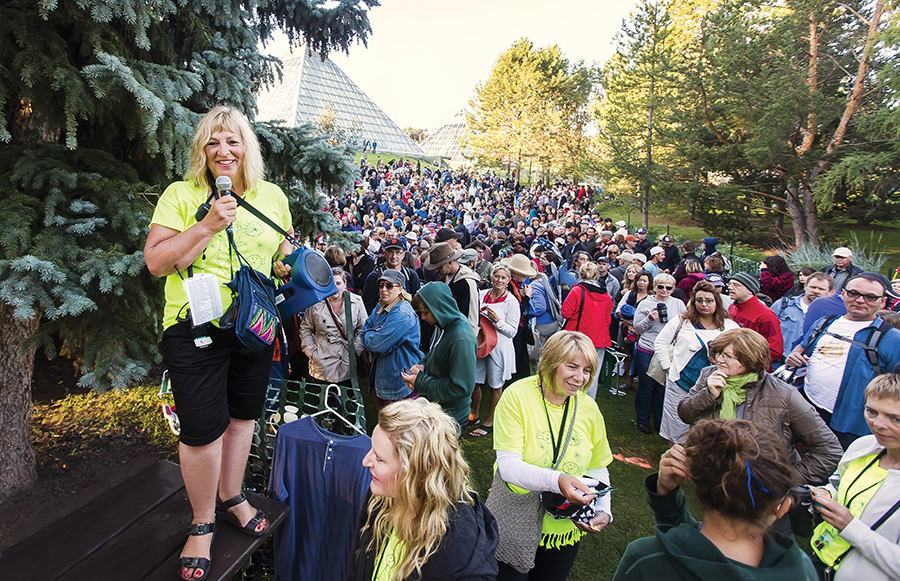As an account executive for Executrade, a recruiting company, Ham isn’t being forced to donate a little more than four days of her time, don a shirt the colour of Kermit the Frog and become known as the “Lottery Lady.” Yet she does it for two simple reasons: “I just really like music and [volunteers] get treated really well,” she says. “I could afford to buy a ticket, but this way I’m invested in it and feel like I’m contributing something back.”
The chance to volunteer at the Edmonton Folk Music Festival is almost as big a draw as a spot on Gallagher Hill. Before the 2012 tickets went on sale, 75 per cent of volunteer spots were filled. As Vicki Fannon, the manager of volunteers since 1989, puts it: “We could not function without our volunteers.”
The Folk Fest operates with three full-time and two part-time staff members, plus some seasonal hands working over the summer. But even at its peak, that only amounts to 20 employees. Compare that to the 2,200 volunteers and it’s clear that Fannon’s not exaggerating.
Volunteers do everything from securing the perimeter fence to pouring drinks in the beer gardens they divide. The site crew in charge of assembling and tearing down stages and tents alone requires 160 people. Even the food is prepared by a small volunteer army feeding a larger one of 2,500. Since 2009, head chef Stephan Levesque, who runs kitchens at two B.C. lodges as well as on tree-planting sites, is hired to come up with recipes that are nutritious, delicious and, more importantly, easy to prepare so the volunteers can take over without a hitch.
This tent is where the community converges and where people catch up from the year or night before. “The food has always been excellent, and can be quite exotic,” says Herb Gale, a retired project manager and volunteerveteran who has seen everything from turkey dinners to wasabi bean salad and bulgogi.
“There are parties every night that I don’t attend because I’m too old – but they’re awesome. And when you’re not working, you can have free admittance to the grounds.” He adds, “the perks are unbelievable.”
